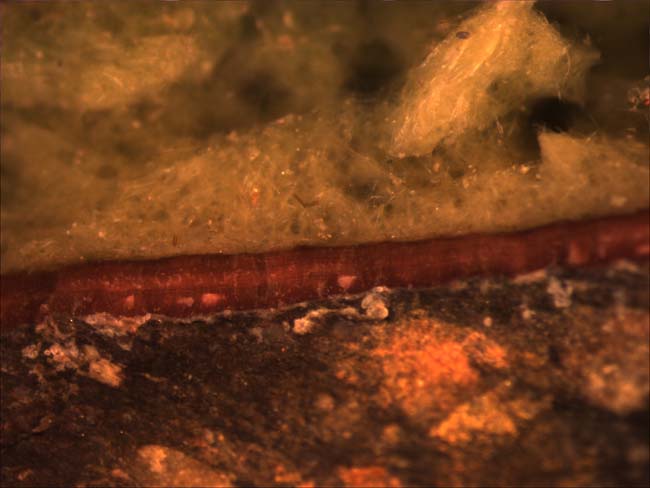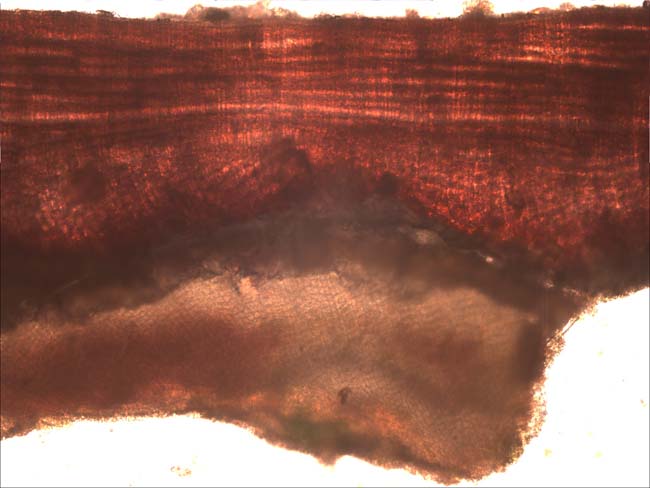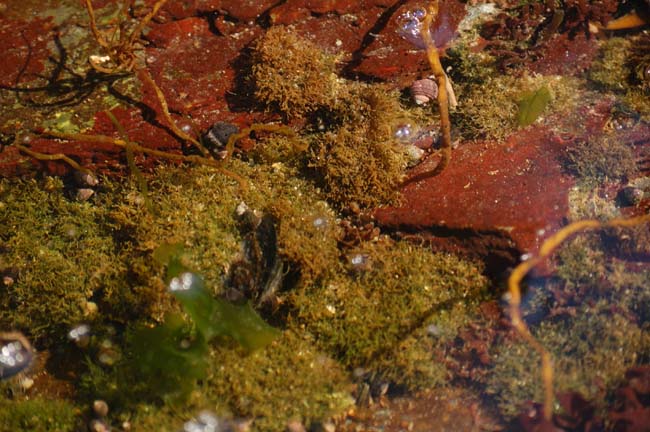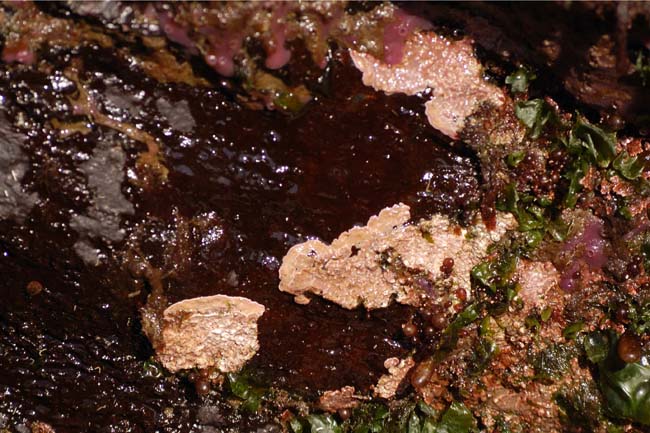
the immortal red crust
OVERGROWTH and anabiosis
Hildenbrandia demonstrates the remarkable ability to survive for long periods of time underneath other things, including animals, vegetables, and minerals. In other crustose algae, this ability is a function of pit connections and hypothallic communication; resources can be marshalled from the exposed thallus to the overgrown thallus, or certain sections of the thallus can just be cut off from the rest of the individual (1). But Hildenbrandia lacks a distinct hypothallus, and its pit connections do not seem to serve as conduits for resources or hormones (1,2). Hildenbrandia's capacity for surviving overgrowth seems to be an example of anabiosis (3, 4).
|
|
|
- Pueschel, C.M. 1982. Secondary pit connections in Hildenbrandia (Rhodophyta, Hildenbrandiales).European Journal of Phycology 23:1, pp. 25 - 32.
- Cabioch, J. & Giraud, G. 1982. La structure hildenbrandioïde, stratégie adaptative chez les Florideés. Phycologia 21:3, 308 - 315. Thanks to Jelte Harnmeijer (http://www.realfuture.org) for translating.
- Bertness, M.D. et al. 1983. Snail grazing and the abundance of algal crusts on a sheltered New England rocky beach. Journal of Experimental Marine Biology and Ecology 71:2, pp. 147 - 164.
- Dethier, M.N. & Steneck, R.S. 2001. Growth and persistence of diverse intertidal crusts: survival of the slow in a fast-paced world. Marine Ecology Progress Series 223, pp. 89 - 100.



